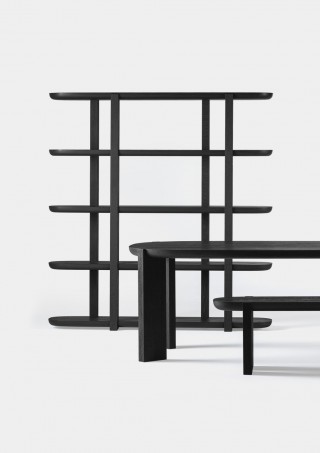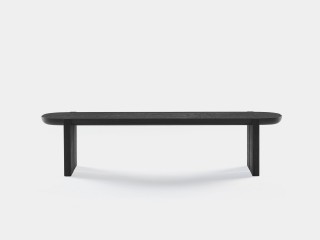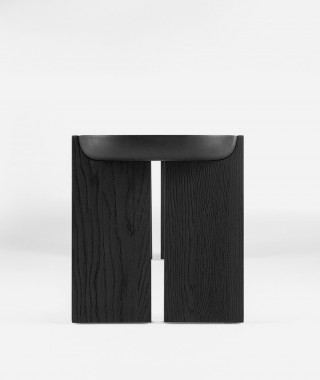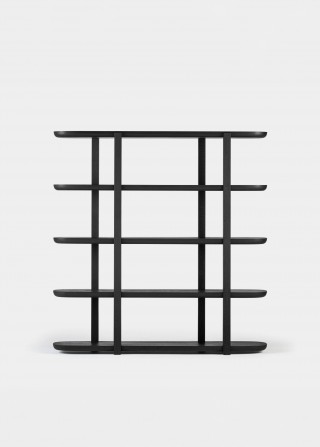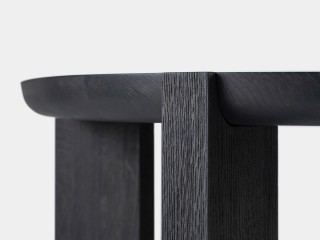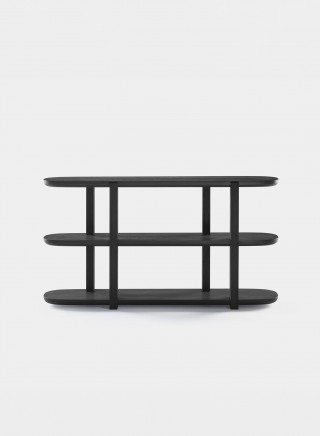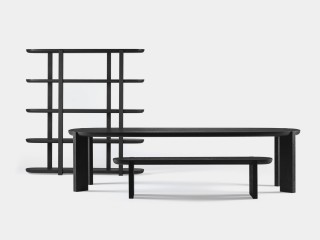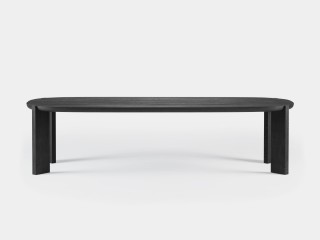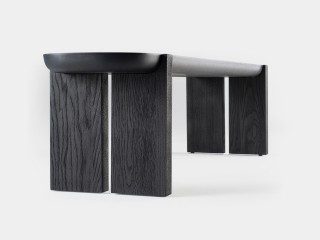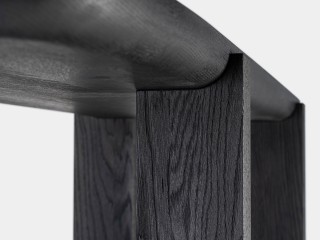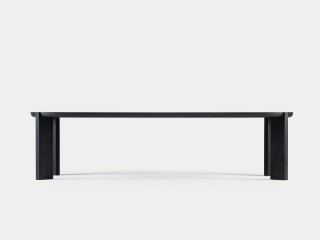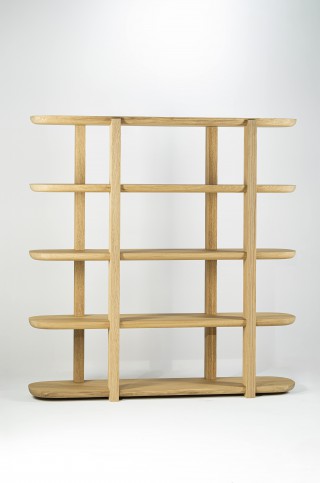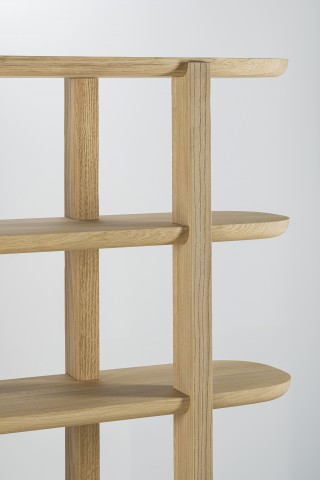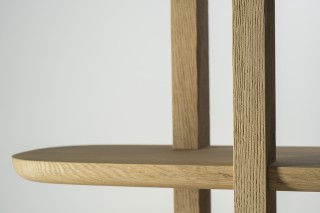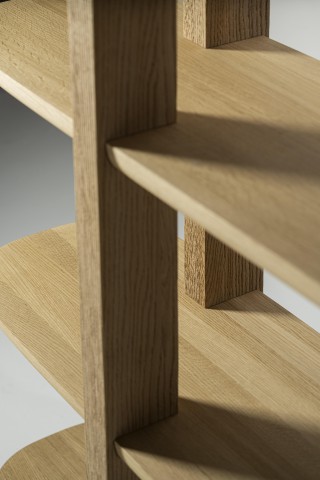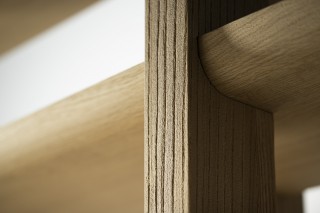EDGE
MILLA & MILLI
The whole "Edge" collection is based on a dialogue between opposites. On the one hand, the humanity and softness of the curved lines of the tablets, and on the other, the rigidity, minimalism and architectural feel of the legs. This juxtaposition creates a visual tension within the pieces that makes them very recognizable and iconic.
The collection is also very much based on the logic of the connection between the horizontal and vertical elements of the pieces. A simple graphic and almost timeless detail that makes the difference and visually highlights the connection and the difference between the two types of elements. It gives a real nobility to the connections.
Another key element of the collection is the difference, the contrast between the different elements in the pieces is also visually highlighted by the different finishes used on the legs and top. The vertical elements, legs and columns, are sanded very deeply, giving them a very rough and matte texture, while the horizontal elements, the tabletops, are smooth and polished. Although the same solid oak is used throughout the collection, the pieces appear to be made of two different materials. The roughness of the legs makes them look almost as if they were made of a porous stone such as lava stone or wood charcoal.
The table tops and benches have a very generous thickness that gives the pieces an impressive and modern feel. You can feel the honesty of the pieces and the fact that they have been carved from what appears to be a single piece of wood. The quality of the wood used, as well as its unusual thickness, has allowed even the longest bench to be made without extra reinforcement or an extra foot in the middle.
Even though the same design logic is applied to all three pieces, each piece is special and unique in its logic, thus adding extra richness to the collection. On the tables, the legs are joined at an angle in the rounded part of the tabletop, creating a more dynamic design. On the benches, the connection is perpendicular to the seat of the bench and the gap between the front and back legs is very small in order to create a tension and a discussion with the piece itself. While on the shelves the back and front uprights of are not aligned, rendering the pieces unexpected and fresh.
The table could be used as a dining table, but also as a communal table in public spaces. The benches are designed to be used around the tables, but also as a stand-alone piece that can be used in places like museums or waiting areas. As for the bookcases, they double as room dividers and will be useful for structuring larger public or office spaces.
These pieces can be seen as a capsule collection with a common identity, but also with enough diversity to make them rich and interesting on their own.
